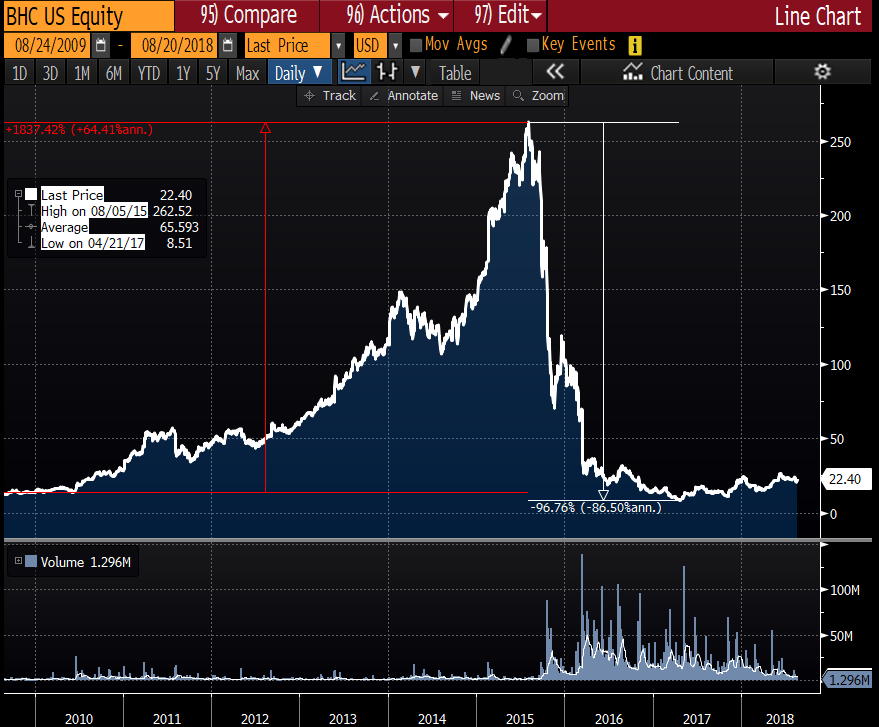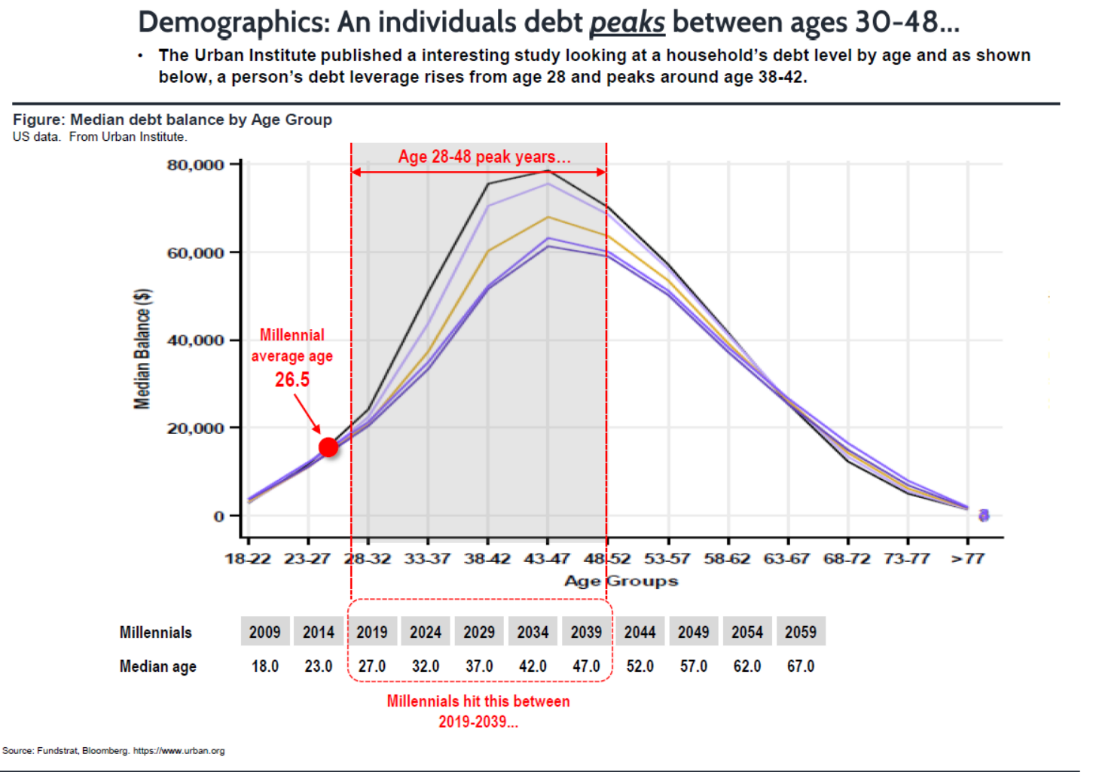by William Smead, Smead Capital Management
At Smead Capital Management, we want to avoid excitement and expense in the marketplace. When a sector of the stock market gets white hot, there are usually a few stocks which dominate the market activity and see explosive price appreciation. We like to think that one of them becomes the thermometer of the market, in effect showing the temperature of the stock market.
In 2015, the most popular stocks and market leaders were in the healthcare sector and the most popular stock was Valeant Pharmaceutical. Here is the chart of Valeant’s shares from 2011 through their peak in 2015 and the resulting crash:

Source: Bloomberg.
Today, the most popular sector is tech and the most spectacular performers have been Netflix (NFLX), Amazon (AMZN) and Tesla (TSLA). Some serious weakness has developed in the price of Netflix and Tesla shares. Are these glam tech stocks peaking? Which one will be this era’s thermometer? What are the ramifications for the overall stock market in the U.S.?
If you added the value of Netflix and Amazon to the tech sector at its recent peak, the tech sector matched the 30% of the S&P 500 Index that it reached at its all-time peak of popularity in 1999-2000. If you are mathematically inclined, the tech bubble was a five-standard deviation event. We hear numerous market commentators defend today’s excitement by comparing price-to-earnings (P/E) ratios in tech to the end of 1999. This comparison is like going to the doctor and being told you are very sick with a temperature of 103 degrees, but that someone was in earlier that day who is much sicker than you with a significantly higher temperature. It’s not very comforting.
Thanks to the tweeting foolishness of its leader, Elon Musk, Tesla is making a bid to be this cycle’s Valeant Pharmaceutical. He has invited an investigation from the SEC and is trying to succeed in an auto industry where even high levels of profitability don’t get rewarded with anything but low P/E multiples. Valeant’s leader back in 2015, Michael Pearson, was viewed as a genius as he led the company to buy numerous drug and healthcare concerns with borrowed money and then cut costs to make earnings look attractive in the short run. Many well-respected value investors got excited about their roll-up wizardry and when the value guys catch the fever, history shows you need to be skeptical.
Can this stock market make money for people if today’s most exciting stocks go down in price? First, over the next five to ten years, it is likely that tech could be a drag on the S&P 500 return like it was when it cooled in 2000-2003. Second, the leadership groups which could take tech’s place as the market leader, like consumer discretionary, staples, healthcare and financials, must make a powerful six-to-twelve month move to overcome weakness in 30% of the index. Lastly, should we care if we don’t own them? History would argue that we might be approaching the point where you get paid for avoiding them.
Therefore, if you fear excitement, where can sustainable future success in this market come from? We think we are early in the move in retail and old media, as they recover from being “Amazoned” last year. Target (TGT) and Nordstrom (JWN) are making big moves to the upside and are not expensive compared to their own histories. Discovery Inc. (DISCA) and Disney (DIS) look like they are forming uptrends after spending months dead in the 2017 waters. Those waters were cool and kept temperatures down.
Among staples, we like Walgreens (WBA) and Kroger (KR) at relatively low P/E multiples. These companies are growing and are capable of being market leaders. In healthcare, Amgen (AMGN) and Merck (MRK) are introducing amazing new drugs for everything from cancer to heart disease to migraine headaches. Big pharma has a history of getting hot, because of the positive effect they have on millions of lives through the medicines they make.
Lastly, millennial household formation could lead homebuilders like NVR (NVR) and Lennar (LEN) to be in a favorable secular phase and homebuilding could lead interest rates higher on the back of a strong economy. The homebuilding could stimulate the economy and millennial economic activity could drive GDP growth and banking activity. Home buying has cooled due to a lack of supply, but that is a malady that our home builders can cure. You see from the chart below that a mountain of new 30-48-year-old borrowers are coming through the pipeline and when their demand is aggregated home building could move the thermometer.

Source: Fundstrat.
In financials, Bank of America (BAC), JPMorgan (JPM) and American Express (AXP) could be leaders in the S&P 500 Index. They trade for well below market multiples and could have massive stock buybacks and dividend increases in their future.
In conclusion, the thermometer might be showing the fever of this tech stock mania is breaking as formerly hot stocks like Netflix and Tesla cool their investors off. It is very possible a leadership changeover like the healthcare peak in 2015 is in the process of forming. Today’s thermometer could be Tesla, and it might be measuring a breaking fever.
Warm regards,
William Smead
The information contained in this missive represents Smead Capital Management’s opinions, and should not be construed as personalized or individualized investment advice and are subject to change. Past performance is no guarantee of future results. Bill Smead, CIO and CEO, wrote this article. It should not be assumed that investing in any securities mentioned above will or will not be profitable. Portfolio composition is subject to change at any time and references to specific securities, industries and sectors in this letter are not recommendations to purchase or sell any particular security. Current and future portfolio holdings are subject to risk. In preparing this document, SCM has relied upon and assumed, without independent verification, the accuracy and completeness of all information available from public sources. A list of all recommendations made by Smead Capital Management within the past twelve-month period is available upon request.
©2018 Smead Capital Management, Inc. All rights reserved.
This Missive and others are available at www.smeadcap.com.















